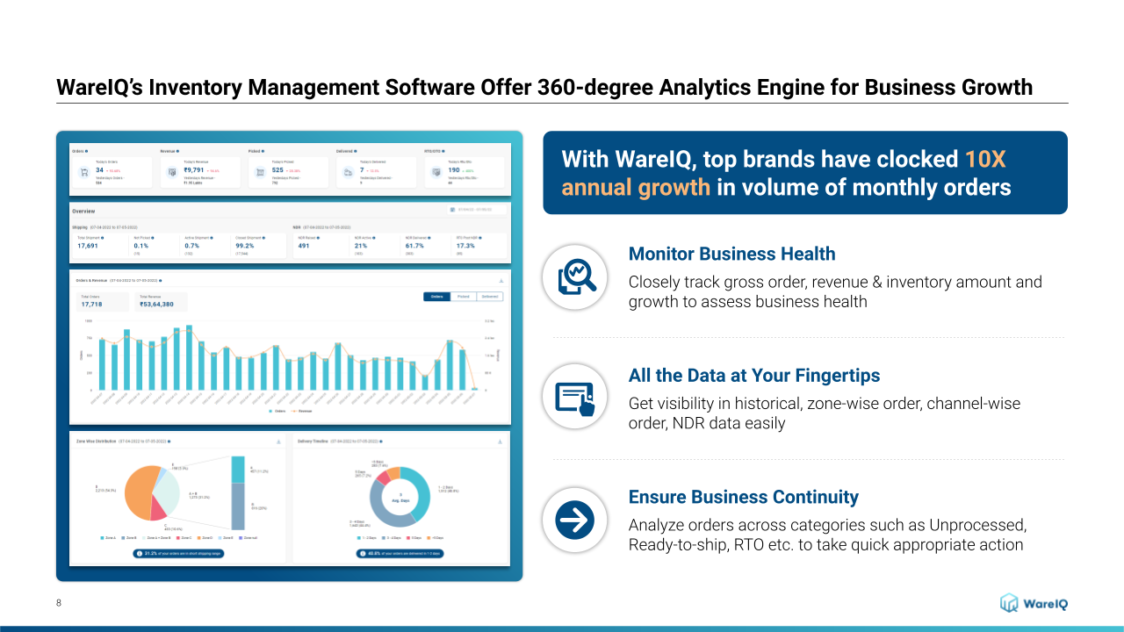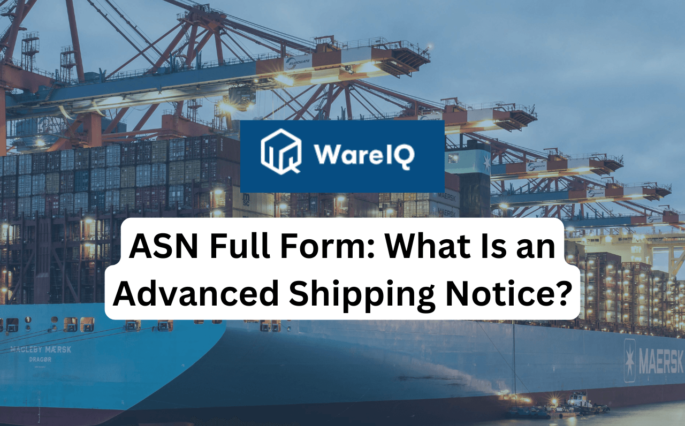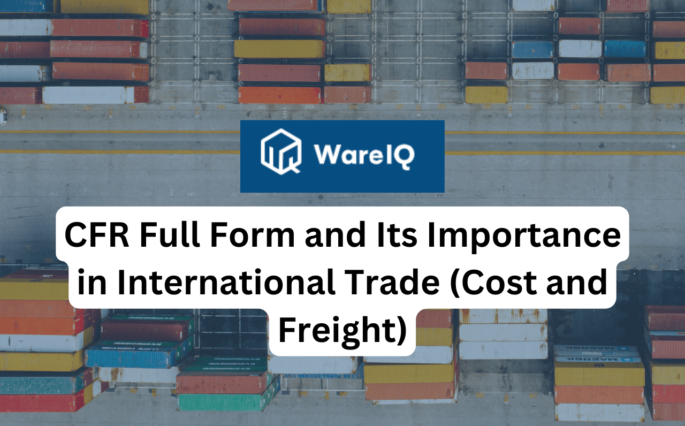12 Most Common eCommerce Customer Pain Points and How to Solve Them in 2025

Online sales are soaring to unprecedented heights. It will be challenging for offline stores to compete as sales are predicted to only rise over the next five years. The numbers are encouraging, but many questions still need to be answered. Although most consumers are still apprehensive about online purchasing since their problems aren’t addressed, customers have overwhelmingly welcomed it with open arms.
There can be nine good reasons to place an order on your eCommerce platform, but a single bad reason is enough to drive the customer away. Even something that might seem trivial can greatly impact deciding if the customer wants to place orders on your platform. Only about 30% of the potential customers complete the same. Why is it so? Here we will talk about ecommerce customer pain points.
The answer is simple- you fail to deliver what you promise, or your competitor offers a better service and don’t meet the customer’s expectations. There are two broad ways to tackle this-
- Enhance the user experience on your website. Ideally, it should be as seamless and optimized as possible.
- Enhance the overall customer service delivered beyond your website.
With changing consumer trends, fast-tracked digital adoption, and eCommerce growth due to the COVID-19 pandemic, customer expectations have rapidly increased. It becomes quintessential to improvise subtle aspects of your website and service to beat the competition.
We have identified several frequent eCommerce pain points that easily slide through the cracks and become red flags for organizations worldwide. Read further as we discuss customer pain points in eCommerce in more detail.
- What are Customer Pain Points in eCommerce?
- How can eCommerce Pain Points be Identified?
- 12 Frequent and Most Common Customer Pain Points in eCommerce and How to Solve Them in 2025
- User Interface of an Online Store
- Hidden Shipping Costs & Delivery Charges
- Insufficient Product Information
- Frequent Stockouts of Major Items
- Delivery of Damaged Products Due to Untrained On-Ground Personnel Handling Product Shipping
- Unprofessional Customer Support
- Low Order Accuracy Rates
- Expensive Return Policies
- Lack of Personalization
- Absence of Product Filtering
- Poor Checkout Process
- Security and Privacy
- Conclusion: How Can WareIQ Help Tackle eCommerce Customer Pain Points in 2025?
- eCommerce Customer Pain Points: FAQS
What are Customer Pain Points in eCommerce?
Any difficulty a potential customer has that prevents them from making a purchase is referred to as customer pain points in eCommerce. For instance, if a client wants to make a purchase but their experience has not lived up to expectations of what their shopping trip should look like, they may have a negative impression of the company from which they purchased their order form. Pain points are various but they all come down to the same idea.
In essence, the friction created by the user experience outweighs the benefits of making the transaction. It could be a payment pain point, a support pain point, or a design pain point. Since the underlying causes of this suffering might vary greatly depending on the individual client, you must try your best to address potential eCommerce pain points.
Most Silicon Valley entrepreneurs and eCommerce experts prioritize product pricing and innovation above everything else. The CEO of Alibaba.com, Jack Ma, has a very different viewpoint. I’m not a tech guy, he says. I view technology through the eyes of my clients, regular people. Businesses like Alibaba, which have sought to address eCommerce customer pain points, have prospered, while the others continue to rely solely on luck.
WareIQ, an eCommerce fulfillment company, empowers online brands with a superior-tech platform to compete with Amazon like service levels by bringing their average delivery timelines from 5-10 days to 1-2 days.
How can eCommerce Pain Points be Identified?
Simply putting oneself in the customer’s shoes is the best method to identify potential eCommerce pain points. As a starting point, consider whether your online business offers enough information, whether the purchase procedure is simple and quick, and how accessible your customer care is. The points you have encountered can then be compared to your clients’ priorities via polls and surveys.
12 Frequent and Most Common Customer Pain Points in eCommerce and How to Solve Them in 2025
Although there are undoubtedly a vast number of eCommerce customer pain points that your consumers may be experiencing, these typical problems mentioned below do have a tendency to recur frequently. Resolving these issues can help you distinguish yourself as a dependable, trustworthy brand that goes above and beyond the competition and ensures that your clients have a positive image of your company. Let us take a look:
User Interface of an Online Store
One of the most significant eCommerce pain points is choosing the correct online store design. Every prospective customer continually evaluates your website’s overall aesthetic and usability, and there is very little room for error. Online customers form an initial assessment of your website in roughly 0.05 seconds. They decide in these few milliseconds whether they wish to stay or go. By ensuring that your online store is presentable, matches your company’s image, and is fully featured, you can provide your clients with the most incredible level of convenience. Online consumers can navigate your website easily and without confusion if your online store’s user interface is designed properly.
The Solution
- Make sure your online store has all the features you need for easy navigation and a seamless buying experience
- Provide clients with sensible search criteria to assist them in locating what they’re looking for
- As forcing customers to register before making a purchase on your online store can be discouraging, offer a guest login option for checkout
- Create a seamless, speedy, and secure checkout procedure without any obstacles or diversions
- Give your consumers a variety of payment options, such as debit cards, credit cards, UPI, digital wallets, and others, to make it convenient for them to use their preferred payment method.
Hidden Shipping Costs & Delivery Charges
Online shoppers dislike hidden or costly delivery rates because they are unpleasant surprises. The customer’s buying experience may be ruined and their cart may be abandoned if they discover there is a delivery fee or a large shipping fee on the checkout page. You must make sure that your shipping charges are visible to customers before they reach the checkout page so that they know the costs associated with their order at this early stage of the buying process. Customers prefer to know the total cost of the product right away. Any additional costs popping up during checkout can be an unpleasant experience. It can suddenly feel like too much or out of their budget. Conversion becomes difficult and the customer would be prompted to explore other options to try to get a cheaper deal.
Additionally, you must provide all forms of free shipping to your clients. Customers typically anticipate free shipping or free shipping with a minimum purchase value. In order to do that, you must come up with a plan to both pay for and lower shipping costs
The Solution
- To give the impression of free shipment, including the cost of shipping in the product price
- Increase the average order value (AOV) by providing product bundles or setting minimum spend criteria
- Implement loyalty programs and subscriptions, increase customer lifetime value (CLTV) and encourage more purchases
- Divide your inventory among various fulfillment centers across the nation so that you can lower fulfillment expenses by keeping your products nearer to your clients
Insufficient Product Information
Customers find it annoying when product information is of poor quality or inadequate, it should be noted among the most common eCommerce customer pain points. Customers may leave your product page due to being confused or not knowing what they will buy. Make sure your product page has everything you need to draw in online shoppers and encourage purchases. Additionally, knowledge about your goods can foster credibility and develop trust.
The Solution
- You must include information on why and how your product will benefit your clients if they are on your product page
- In order for your customers to understand exactly what they are purchasing, you must first give them access to high-resolution photos of all of your product profiles
- You should write detailed descriptions of your items to explain them to customers so they are aware of their main characteristics and advantages
- You cannot let your customers be uncertain about whether your products would fit them if you sell clothing or shoes. To avoid any confusion throughout their buying experience, you must include a size chart
- The most significant part is that you should add a section for customer reviews to the product listing so that your clients can read the endorsements as social proof
Frequent Stockouts of Major Items
Both online retailers and potential customers are quite concerned about product stockouts. Going out of stock frequently for high-demand products is a huge red flag for the business and is among the common ecommerce customer pain point. If customers don’t get the products they want and when they want them, they will simply lose their trust and loyalty in your services. Poor inventory management can also lead to misplaced orders, delayed deliveries, and poor tracking- all of which can directly affect your sales and have a long-term impact on your business.
By maintaining regular inventory replenishment, you can ensure you never run out of supplies. Common out-of-stock occurrences might damage your brand’s reputation and cause clients to turn to your rivals.
With effective inventory management, you can ensure that you never run out of goods and always have a minimum amount of stock available for shipping, preventing you from missing out on possible sales. For that, you must keep your inventory levels at their ideal levels and replenish them when needed. Additionally, it is crucial to anticipate order volume or surges ahead of time and maintain the necessary inventory levels throughout holiday seasons or flash sales.
The Solution
- Keep a minimal amount of inventory on hand at all times using the reorder point method and replenish it when it runs low
- You can replenish your stock at predetermined intervals using the periodic approach
- You can regularly replenish your stock in more diminutive amounts using the top-off method
- Forecast demand based on a study of your sales data
- All these issues can be tackled with the smart inventory management that WareIQ provides, called InventoryLogIQ. Once you plug in WareIQ into your supply chain, you can generate insight on inventory placements by locations to offer fast shipping. WareIQ will then take care of optimally shipping the inventory to the customers. It can also recommend inventory placement across its decentralised network based on supply and demand trends ensuring that the stock is available where it should be.
Delivery of Damaged Products Due to Untrained On-Ground Personnel Handling Product Shipping
Your customer has placed the order, and you have taken care of all the logistics required smoothly and shipped it successfully. What can go wrong now? A lot of things in the last-mile delivery puts the product in your customer’s hands- the ultimate end goal.
We have seen in a previous article how WareIQ can help you deal with these challenges. One of the significant issues you can face is the on-ground personnel who don’t handle the packages well and make mistakes with the delivery. A lot of the last-mile challenges due to poor handling can be overcome with intelligent, customized solutions that WareIQ provides.
The Solution
Customers expect to get their package delivered without hitches and experience smooth unboxing. Branded packaging helps. It also makes it easy for delivery personnel to handle it. Amazon is an excellent example in this context, and WareIQ can provide the same level of experience with its predefined packing guidelines. Sellers can also avail of discounted rates from the supplier network with branded packaging options. With a robust tracking system in place, things get easy to monitor.
Unprofessional Customer Support
The level of customer service provided is directly reflected in the online reviews and word-of-mouth recommendations. In many cases, mistakes by a 3PL provider or some external agent in the supply chain can affect the consumer-facing brand value. For example, a delayed delivery by your logistics provider brings a negative review to your brand.
The reputation you hold among your customers is influenced by how you deal with customer complaints or assist them online and the offline ecosystem you work with. What’s worse than a delayed delivery is not addressing it on time and being accountable by giving personalized feedback to the customer. This is amongst the important customer pain points.
It is unacceptable to lose a consumer if they have a problem with your brand, customer feedback is essential. Such circumstances might be used to demonstrate that you are willing to help your clients in their time of need. Customers are thrilled when a firm makes sure things are fixed when there are problems with their product or service. To avoid confusion, you can offer your customers real-time assistance and ensure they are well-informed about every step of the purchasing process.
The Solution
- Offer devoted client support
- Utilize chatbots for live customer service.
- Possibly the most successful customer service option is live chat assistance. Customers can obtain the same one-on-one assistance through live chat that they do through phone conversations.
- By providing an expected order delivery date, you can manage customer expectations accordingly
- Keep clients informed by sending them messages and emails with order updates
- If you outsource eCommerce fulfillment to WareIQ, many things become easy to manage. Firstly, you need not worry about the delivery and how the offline staff handles shipments. You will also receive a branded tracking page to take timely action. RTOs/NDRs report are also efficiently handled by WareIQ without any delays. It enables faster returns processing with quicker and more efficient returns approval, pickup and cash recovery cycle.
Low Order Accuracy Rates
Customers have little to no tolerance for faults while placing online orders. For instance, if a customer who ordered a white t-shirt received a red one in place of it, it disrupts the entire purchasing experience, damages the reputation of your business, prompts returns, and you run the risk of losing the consumer. Orders must be fulfilled accurately and within the mentioned time frame to create customer satisfaction.
The Solution
- You can increase client retention and create consumer trust by ensuring orders are accurate.
- Because human beings are more prone to mistakes, typical warehouse processes can be automated using barcode scanners, conveyor belts, intelligent robots, and other devices. This can aid in improving the effectiveness of order processing
- By using barcode readers, creating detailed picking lists, and utilizing warehouse slotting, you can decrease picking errors by storing inventory by type, size, weight, location, etc.
- You can carry out quality checks while processing orders and apply the appropriate shipping labels to products to prevent the shipment of incorrect items or damaged goods to consumers
- You can provide rewards for accuracy to your workers in order to increase motivation and decrease errors
Expensive Return Policies
Customers want both a free return policy and a simple return process; otherwise, you risk losing them. In order to give your consumers a hassle-free experience, you should optimize the entire returns procedure so that all of your customers’ concerns are addressed. To do that, you must draft a perfect returns policy that includes all the provisions that make your and the customer’s life easier.
The Solution
- Pre-determine the return period, such as 30 days
- Outline the intended state of returned goods, including product tags
- Mention the documentation needed for refunds, such as an invoice
- Offer specific payment methods, such as UPI and debit cards
- Specify extra costs, if any
Lack of Personalization
36% of customers feel that eCommerce brands should provide a more personalized shopping experience. A personalized shopping experience entails a store tailoring its products and services to each customer. This shows consumers that the brand cares about them and their opinions. It also enables a speedy, smooth, and hassle-free experience. Because of this, it can also increase sales.
The Solution
- Create dynamic and visually appealing content
- Run promotional campaigns targeting specific customer audiences
- Personalize product recommendations based on past customer behavior and user preferences
Absence of Product Filtering
One of eCommerce’s most prominent customer pain points is the absence of product filtering and sorting. It refers to when your customers are able to browse through your listings and find the items they’re looking for without any difficulty. They can use dropdown menus that allow them to filter basic fields such as style, size, and price.
The Solution
- Consider giving customers multiple viewing and sorting options
- Make sure to add category-specific options
- If you don’t yet have a search bar, it’s time to add one that lets customers enter product numbers, keywords, and brand names.
Poor Checkout Process
Checkout is usually the last step during eCommerce’s customer conversion journey. It is the page where customers have added products to the cart and are only required to click the button to make the payment. However, a slow-moving and a bad checkout experience on your website can drive customers away from making that final payment to purchase the product. This can be due to the availability of lesser payment options, the slow loading speed of the page, no visibility of delivery timelines or insecure or untrustworthy payment gateway.
The Solution
- Create a checkout page that’s user-friendly, secure, and has all the relevant information that a customer might seek while making the final payment
- Ensure that you have multiple modes of payment options listed on your checkout page
- Display delivery timelines that can influence customer decisions. WareIQ provides prime-like shipping badges to display transparent delivery timelines on the product and the checkout page per pin codes entered by customers.
- Don’t ask for too many details on the checkout page
Security and Privacy
Cybersecurity threats aren’t going away in a hurry, and customers are constantly aware that privacy breaches constantly happen. If you can prove to prospective customers that your website is secure to use and that their data and privacy is safe, their trust in your company will grow. Because eCommerce requires so much sensitive and essential information to be disclosed between companies and their customers, extra care needs to be taken to protect this sensitive data.
The Solution
- Use trust seals and security certificates to increase the security of your website. A trust seal shows customers that your store is legitimate, while security certificates highlight that you’re using a secure connection
- Use encryption for messaging apps and emails
- Draft up a privacy policy and display it on your website.
Conclusion: How Can WareIQ Help Tackle eCommerce Customer Pain Points in 2025?
Establishing what customer pain points exist for your online store and how to remedy them should be the first step if you’re willing to scale up your online business venture. Having said that, it is critical to remember that eCommerce customer pain points require ongoing attention. To make sure every component of the client experience is as simple and user-friendly as possible, you should routinely monitor your website and brand. You’ll have more content customers and fewer cart abandonments in this manner.
Addressing the eCommerce pain points where a third party is the cause of them can be difficult. If there is some issue with your online website, you can probably seek some optimization with your in house developer team or your software vendor. In case of offline issues in the supply chain like we have seen, things get tricky with many variables involved. Partnering with someone trusted and efficient like WareIQ, which has the technology and infrastructure to deal with such issues at scale can immensely help mitigate the same.

WareIQ is an eCommerce fulfillment company that provides a wide range of services that will enable you to remove almost all customer pain points in eCommerce by giving you access to a vast amount of resources and technology. Some ways that we can do this are by:
- Providing ultra-fast delivery through a choice of more than 20 shipping aggregators that always assigns the quickest and cheapest option for every order. Sellers can go by default “Intelligent Mode” or easily configure their preferences.
- Offering a custom WMS that can integrate with multiple eCommerce selling platforms and update inventory across multiple fulfillment centers in real-time
- Giving you access to a nationwide network of fulfillment centers and dark stores to enable you to store inventory closer to your customers
- Offering branded tracking pages that give your customers all the information they need in a highly customizable way







